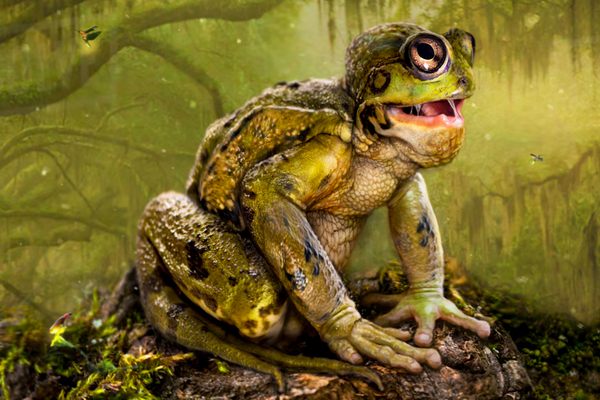The Myth and Mystery of Scotland’s Wild Haggis
The creature is said to be the source of the iconic Scottish dish.

Has a haggis ever run wild and free?
If you believe a haggis is an iconic Scottish dish of sheep’s stomach stuffed with spiced innards and oatmeal, then no. But one humorous theory posits that the haggis’s source is not the sheep, but rather, the wild haggis: a creature with four legs and a shaggy mane.
Legend surrounds the wild haggis. According to many cryptid directories, the wild haggis is an unbalanced beast whose legs of unequal length enable it to lope up steep Scottish hillsides with ease. (According to a mock academic paper on the subject of ultrasounds for wild haggi, this allows “haggs” and their hagglets to “graze along the steep mountain slopes towards the rising sun and move through the heather.”)
Physical depictions of the wild haggis vary, but one museum has a “specimen.” In a taxidermy display at the Kelvingrove Art Gallery and Museum in Glasgow, there is a lone wild haggis. Shaggy and short-legged, it is displayed beside a prepared haggis for comparison, and a plaque declares that this is the Haggis scoticus.

Of course, the fuzzy and fascinating wild haggis is not real. Instead, it belongs to the fake-animal pantheon that includes jackalopes and drop bears: a creature of tall tales trotted out to to test the credulity of tourists. While the origin of the wild haggis is lost to time, one early ode to the wild haggis wasn’t even written by a Scot. In the January 2, 1924 edition of the New York Tribune, the satirical poet and journalist James J. Montague penned several stanzas describing a mythical hunt for a bearded, vicious haggis:
My heart’s in the Highlands, twa strings on my bow
To hunt the fierce haggis, man’s awfu’est foe.
And weel may my bairn ha’ a tear in his ee.
For I shallna come back if the haggis hunts me.
Montague’s words seem to have stuck. In the British Isles in 2003, the press had a field day when a haggis company surveyed 1,000 American visitors to Scotland and found that a third believed in the wild haggis. In 2014, the Visit Scotland website posted a joking “reveal” of blurry footage, showing a swiftly scurrying, hedgehog-like haggis.
Those interested in owning their own wild haggis can purchase stuffed animals of the creature or haggis-summoning whistles. Soon, though, on January 25, haggis-lovers will enjoy the dish at Burns Night celebrations around the world. In honor of the Scottish poet Robert Burns, his admirers display a haggis to the tune of bagpipes and recite the famed poem Address to a Haggis. In the poem, Burns remarks on the haggis’s cheerful visage (“Fair fa’ your honest, sonsie face”). But he makes no mention of the wild beastie of the Highlands.
Gastro Obscura covers the world’s most wondrous food and drink.
Sign up for our regular newsletter.





























Follow us on Twitter to get the latest on the world's hidden wonders.
Like us on Facebook to get the latest on the world's hidden wonders.
Follow us on Twitter Like us on Facebook